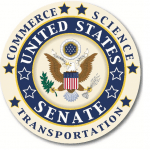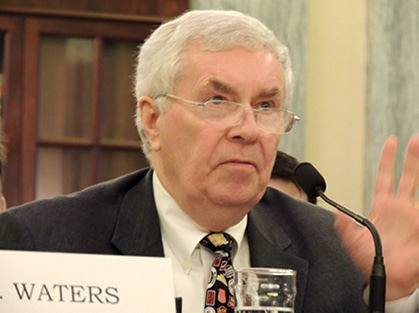
“Senator Wicker and Sen. Booker worked hard to build a bipartisan consensus on the way forward for safer and more reliable passenger rail service following the tragic derailment of Amtrak 188,” said Commerce Committee chairman Sen. John Thune (R-S.D.). “First and foremost, this legislation enhances safe travel by helping implement Positive Train Control technology, grade crossing improvements, requiring inward facing cameras to monitor crews on passenger trains and other safety measures. The committee’s vote puts passenger rail service on a more sustainable course by focusing resources on the most critical infrastructure improvements, streamlining burdensome processes to accelerate project delivery and demanding more accountability in Amtrak’s accounting structure and investment decisions.”
The legislation authorizes Amtrak for the next four years at an average $1.65 billion a year. Additionally, $570 million in grant funding is authorized every year, highlighted by a grant program that consolidates previous separate, siloed authorizations into a streamlined, competitive program. These competitive grants would go toward programs related to capital improvements, alleviating rail congestion, improving grade crossings, implementing Positive Train Control and other safety and infrastructure projects.
Highlights of S. 1626, as amended and approved by the committee:
Enhancing Safety
- Positive Train Control – Advances deployment of Positive Train Control technology by authorizing grants and prioritizing loan applications to support its implementation.
- Inward Facing Cameras – Building on voluntary efforts by Amtrak, the bill requires all passenger railroads to install inward-facing cameras to more effectively monitor train crews and to improve accident investigations.
- Grade crossings – Requires grade crossing action plans to facilitate and improve state grade crossing safety efforts through engineering, education and enforcement.
- Speed limit enforcement – Requires speed limit action plans to require all passenger railroads to evaluate high-risk track segments and address automatic train control modifications, crew communication and other speed enforcement issues. This measure is complemented by other requirements for signage and alerters.
- Close call reporting – Encourages the use of confidential close call reporting system programs to identify hazards before they lead to accidents.
- Focusing resources on safety – Consolidates existing grant programs to focus resources on the most critical safety and infrastructure improvements.
- Indexing the liability cap to inflation – Adjusts passenger rail liability cap for inflation from its 1997 level, from $200 to $295 million, adjusts it every 10 years for inflation, and applies the revised cap to the Amtrak accident on May 12, 2015.
A Sustainable Course for Passenger Rail
- Leveraging competition – Requires the Department of Transportation (DOT) to solicit and facilitate competition from carriers other than Amtrak to improve service and reduce subsidy costs.
- TRAIN Act – Includes provisions offered Sen. Roy Blunt (R-Mo.) in the TRAIN Act (S. 769) to streamline the permitting process for rail improvements to cut red tape on critical infrastructure projects.
- Reliable business metrics – Requires Amtrak to develop methodologies for determining what routes and services it should provide.
- Fiscally sustainable routes – Establishes a working group for the restoration of passenger rail service east of New Orleans and creates a competitive grant program for fiscally-sustainable routes, potentially including the restoration of service abandoned after Hurricane Katrina.
Improving the Northeast Corridor
- Separating Amtrak’s business accounts – Reforms Amtrak by requiring the separation of business line accounts, facilitating greater re-investment in Amtrak infrastructure, including the Northeast Corridor.
- Greater role for states – Gives states greater say in infrastructure planning and improvements on the Northeast Corridor and with state-supported routes.
- Private sector investment opportunities – Includes provisions from Sen. Booker’s Railroad Infrastructure Financing Improvement Act (S. 797) to make the Railroad Rehabilitation & Improvement Financing program faster and more flexible. With changes from Sen. Mark Kirk (R-Ill), the bill would better leverage private sector investment, including through public-private partnerships, while simultaneously protecting taxpayer interests. The reforms have the potential to accelerate major projects such as new Hudson River tunnels or improving rail service and stations in and around Chicago and other areas served by rail. In addition, S. 1626 solicits private sector proposals to enhance economic development of rail stations and increase commercial opportunities for railroad right-of-way.
Sharing the rails with freight
- Crude-by-rail – Strengthens crude-by-rail safety standards by requiring thermal blankets under tank car jackets to reduce the risk of rupture in a collision or derailment, closing a potential loophole in DOT regulations. The reforms also improve emergency response by requiring real-time information on the locations and contents of trains carrying hazardous materials.
- Study and Testing of ECP Brake Technology – While installation of new electronically-controlled pneumatic (ECP) brakes moves forward, the bill requires real-world testing by the National Academies and a Government Accountability Office (GAO) study on pilot program testing. The provision requires DOT to consider the results of this testing and study.
Click here for text of the bill as introduced by Sens. Booker and Wicker.
Click below for amendments adopted by the committee:
Thune amendment 1 with Blumenthal second-degree amendment 1, and Manchin second-degree amendment 2.
 Members of the Senate Commerce Committee yesterday voted to approve the markup of a bill that would extend the deadline for affected rail companies to implement positive-train-control (PTC) technology until Dec. 31, 2020, instead of the current deadline that would require implementation by the end of this year.
Members of the Senate Commerce Committee yesterday voted to approve the markup of a bill that would extend the deadline for affected rail companies to implement positive-train-control (PTC) technology until Dec. 31, 2020, instead of the current deadline that would require implementation by the end of this year. SMART Transportation Division National Legislative Director James Stem
SMART Transportation Division National Legislative Director James Stem